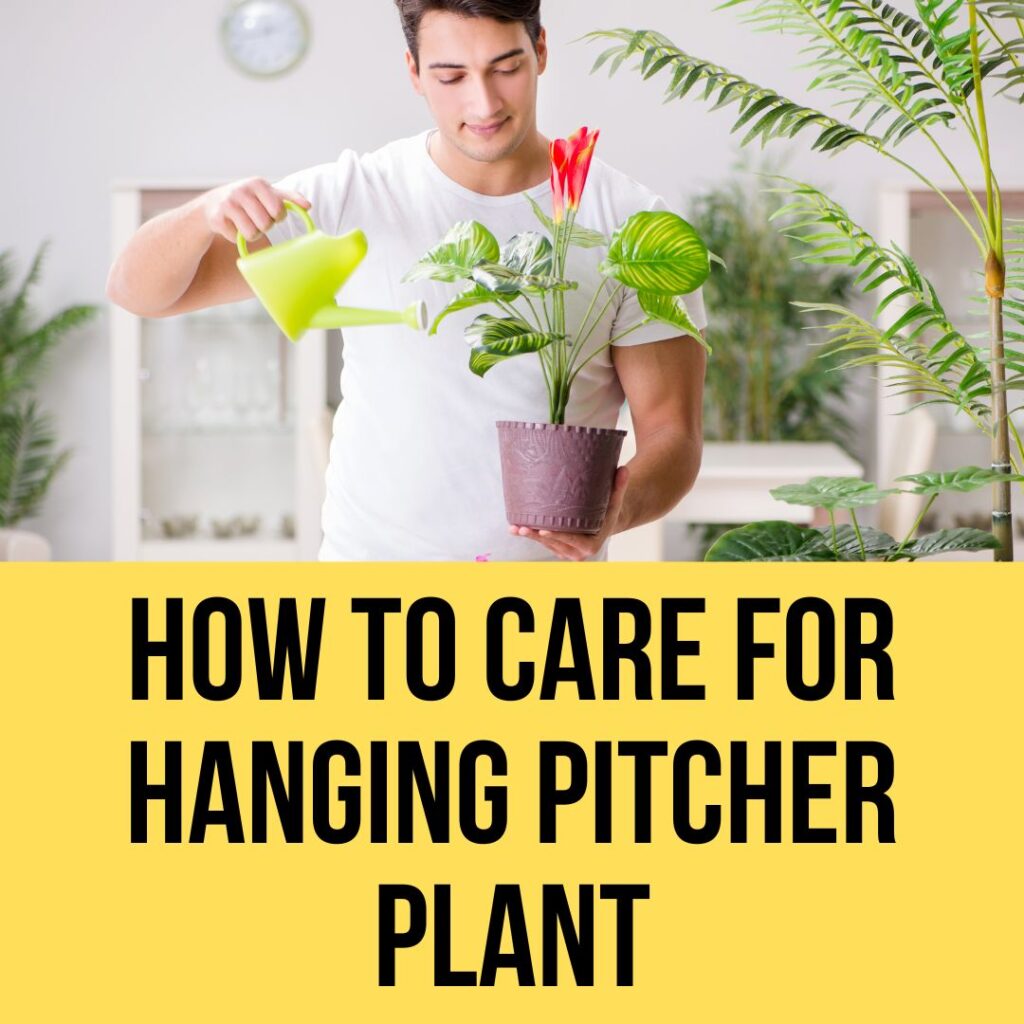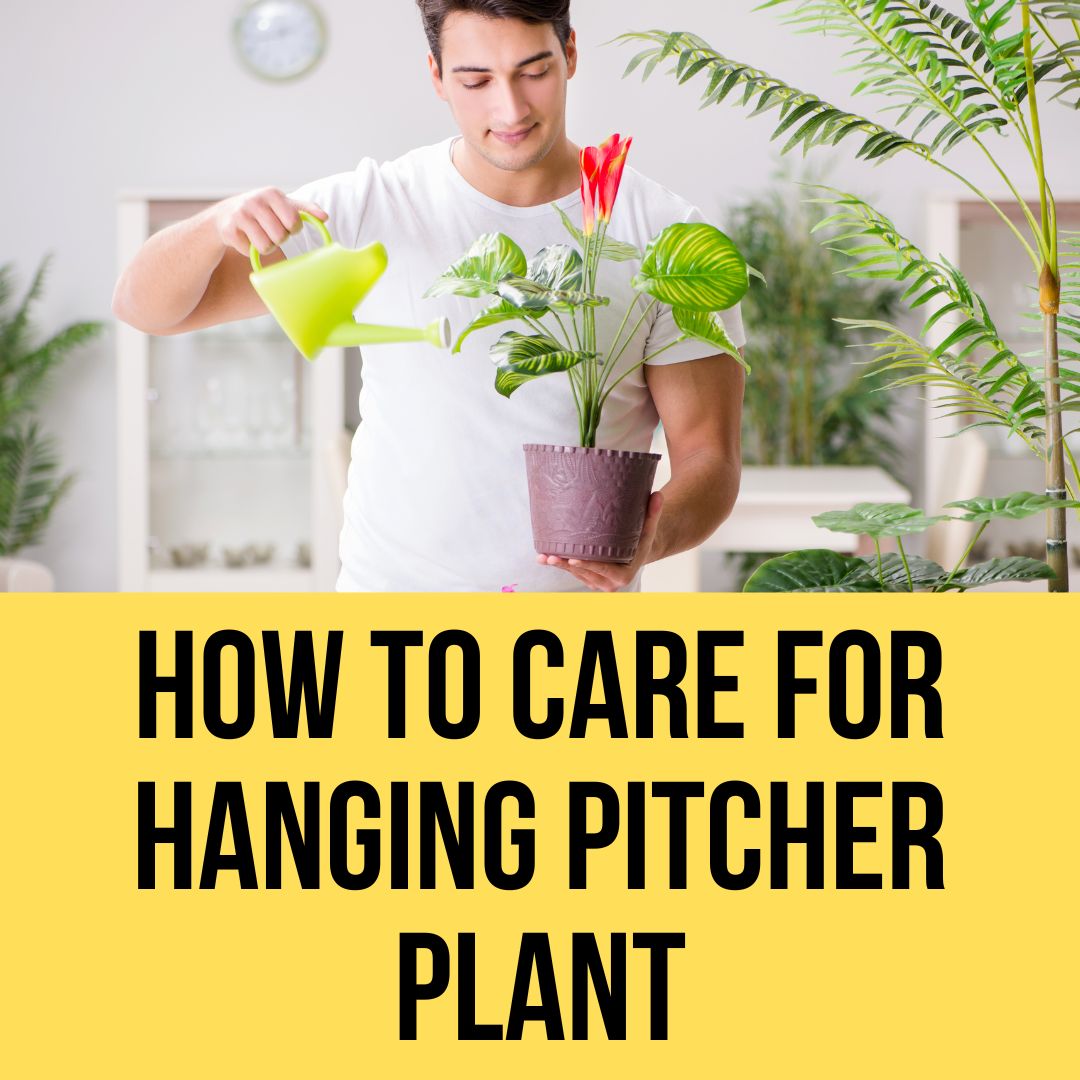Pitcher plants are a wonderful ornamental accessory for the house. If you are ready to put in the additional effort, you will have a spectacular conversation piece at the end of it all. However, they may be a little bit temperamental. Continue reading to get knowledge about pitcher plants that are suitable for hanging baskets.
Today we will tell you how to care for hanging pitcher plants in detail.
What exactly is a Hanging Pitcher Plant?
All species of pitcher plants belong to the family of herbs and are perennial, meaning that they live for more than one year. Pitcher plants may be discovered growing wild in a variety of environments that have poor soil conditions, including North America, Southeast Asia, and Northern Australia. These plants are native to far-flung areas on the planet such as these.
They inhabit sandy coastal wetlands, pine barrens, and bogs in addition to other types of habitats. Some species of pitcher plants thrive in warmer temperatures, while others need high levels of humidity for optimal growth.
As was mentioned earlier, hanging pitcher plants are carnivorous and need nitrogen-poor soil in order to thrive in their natural environment. The hanging pitcher plants get the nitrogen they need to thrive from the insects that they consume, which is a need for all plants.

Care for Plants Kept in Hanging Pitchers
Growing pitcher plants in baskets that are hung from the ceiling is the most efficient method. In their natural habitat, the plants climb up trees; but, if you give them lots of room to spread out, you’ll be able to provide them with the air circulation they need and enable the pitchers to reach their maximum potential for size and complexity.
The ideal growing environment for hanging pitcher plants is soil that is light, has good drainage, and is low in nutrients but rich in organic matter. This may be sphagnum moss, the fiber from a coconut, or even an orchid mix purchased from a shop.
Pitcher plants need a high humidity environment; they should be constantly watered from above and misted on a daily basis. You should suspend your basket so that it will be exposed to the sun.
The temperature is a very significant factor. The majority of species need temperatures of at least 80 degrees Fahrenheit (26 degrees Celsius) throughout the day, with a significant decrease in temperature from day to night.
What maintenance should you provide for Hanging Pitcher Plants?
Carnivorous plants with leaves fashioned like pitchers are known as hanging pitcher plants. These plants hang from the ceiling and provide a pitfall trap for falling insects. These fascinating plants have certain requirements for their upkeep. However, both novice indoor gardeners and experienced professionals are capable of cultivating hanging pitcher plants effectively by absorbing knowledge such as that is presented in this article.
What kind of maintenance does a hanging pitcher plant require?
To ensure that your pitcher plant thrives and continues to provide you joy for many years to come, it requires a certain regimen of maintenance. Here are eight essential tips for caring for a new hanging pitcher plant, beginning when you bring the plant home and continuing until the time when the hanging pitcher plant is fully grown.
- Obtaining the hanging pitcher plant
Find a reliable greenhouse where you can buy a plant of the species you want to cultivate and buy it there. It is possible to cultivate pitcher plants from seeds or cuttings, but inexperienced gardeners should avoid doing so (see more below).
You may purchase pitcher plants online, but you run the risk of their becoming damaged or dying while they are in transit.
- Identifying the optimal spot in which to cultivate the young plant at home
Hanging pitcher plants thrive best in bright, sunny environments where they may bask in the rays of the sun for at least six hours each day. They thrive best at temperatures ranging from 60 to 85 degrees Fahrenheit. A lot of individuals choose to cultivate pitcher plants either in a terrarium or in a greenhouse.
- A hanging pitcher plant requires adequate drainage in its growing medium
By using a decent soil that is comprised of a combination of moss and perlite in the proportion of one to one (you can also use Sphagnum moss, charcoal, and orchid bark), you can guarantee that the pitcher plant has the appropriate soil and drainage for its needs. However, it is essential to look for and do study the kind of soil and the ratios that are appropriate for a certain variety of pitcher plants.
A helpful hint is to remember that pitcher plants thrive on soil that is deficient in nutrients, therefore you should never use potting mix or fertilizers on them. The plant will eventually perish if it is grown in soil that is very fertile because it will get suffocated.
- Ensure that the soil is kept very damp during the growth season
The growth season begins in May and finishes in October; throughout this period, the plant will need frequent watering and should be fed regularly. Never allow the plant to go completely dry, and always use rainwater or distilled water that has only trace amounts of salt when watering the plant. The growth of the plant may be stimulated by aerating the water just before it is applied to the soil underneath it. To aerate the water, fill a container with water until it is half full, cover the container, and then shake it vigorously.
- Maintain a humid environment in the space below a hanging pitcher plant
Pitcher plants will cease producing their distinctive pitchers if the relative humidity is too low. Because of this, pitcher plants are often cultivated inside, at least in their early stages, in artificial environments such as greenhouses or terrariums.
- Providing nourishment for a hanging pitcher plant
It is not recommended to fertilize the soil around a pitcher plant since it might cause the plant to become diseased; however, it is OK to use a balanced soluble fertilizer to feed the plant by placing it inside of its pitchers. If the person who owns the plant does not have the money to purchase fertilizer, it is permissible for them to place a fly, cockroach, or another tiny insect inside the pitchers of the plant instead.
- Preventative care for hanging pitcher plants throughout the winter
When winter arrives, you should prune away the dead leaves. Dormant periods for pitcher plants often last between three and five months throughout the winter, depending on the species. The temperature of the plant should be maintained lower than usual, and it should be kept drier than usual throughout the winter.
- Divide and repot if required
It is best to split the plants and repot them just after the hanging pitcher plant emerges from its winter slumber but just before it begins its cycle of fast growth. If it is given the attention and care it needs, a hanging pitcher plant may survive for many years if it is kept correctly.
- Feeding a Hanging Pitcher Plant
The easiest approach to ensure that a hanging pitcher plant receives sufficient nutrition is to position it in an area where it may be visited by insects. On the other hand, if this cannot be done, the plant’s proprietor will be responsible for providing it with food.
- What to Put in the Water of Your Hanging Pitcher Plant
Even though the food they eat is not very appetizing to people, it is simple to provide for pitcher plants. The only time that hanging pitcher plants need food is when they are actively developing, which is never during their dormant period in the winter.

Parting Thoughts
Since many pitcher plants are either threatened with extinction or are too challenging to cultivate in captivity, they are not generally known to the general population.
It could appear a little challenging to grow and take care of hanging pitcher plants. The elegance and exotic appeal they provide to houses, however, make all the preparation and labor worthwhile.
By pressing open the dried petals over an envelope or piece of paper towel in the late autumn, you may gather hanging pitcher plant seeds. Until you’re ready to plant them, keep them in the refrigerator’s back.
With all of this knowledge at your disposal, you should be well on your way to growing long-lasting, healthy hanging plants. Happy Gardening!!!
